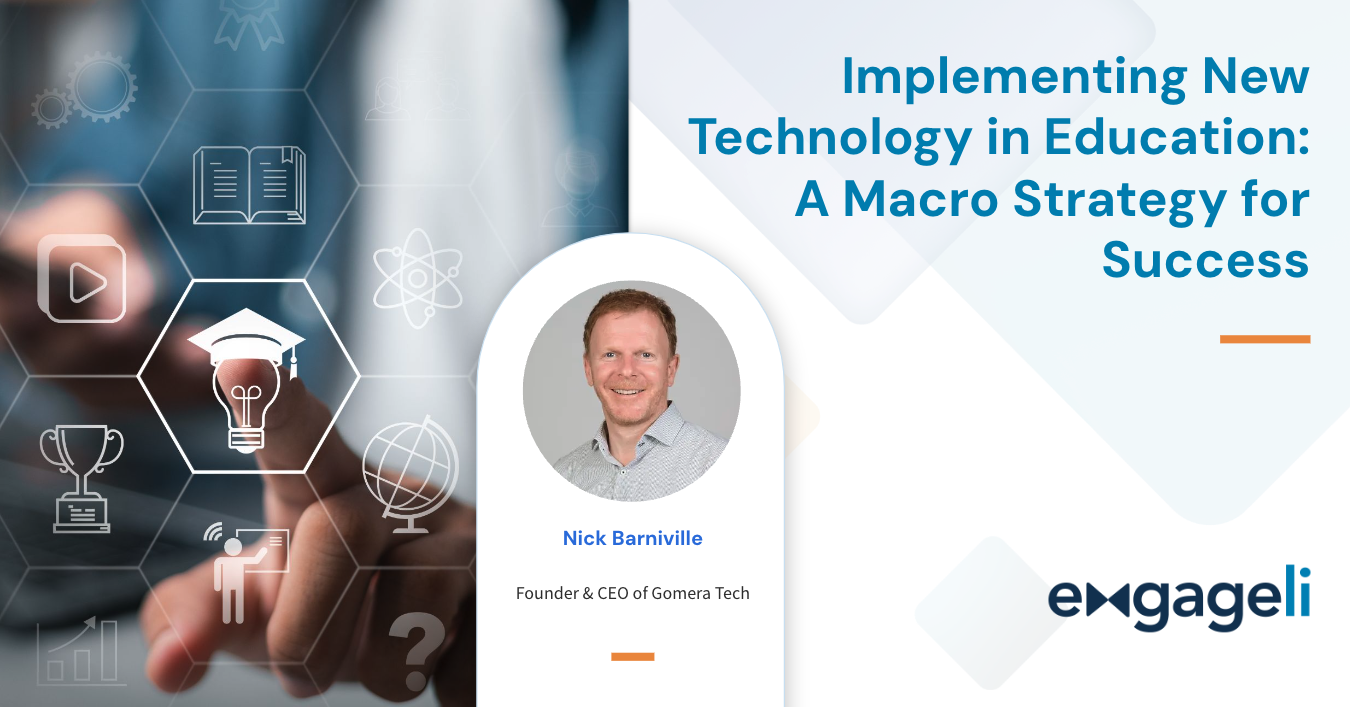In today’s digital landscape where new ideas continually reshape the field of higher education, Engageli seeks to spotlight thought leaders who are making an impact. This article, featuring the work of Nick Barniville, provides readers with an insight into the online education sector by showcasing how Gomera Tech is helping institutions integrate new technology.
Implementing new technology in educational institutions can be a daunting task, but with the right approach and strategy, it can lead to significant benefits. Gomera Tech, a consulting company specializing in online education, follows a macro strategy for choosing and implementing new technology solutions. This strategy focuses on understanding the needs and goals of institutions, aligning stakeholders, and conducting pilots to ensure successful adoption.
Nick Barniville, the Founder and CEO of Gomera Tech, recently shared how he thinks through the frameworks Gomera Tech uses. While he recognized that every client is different, he recognized that there are certain macro-strategies for choosing, implementing, and thinking about new technologies in the online education space, which he broke down into the following categories.
Aligning Stakeholders and Defining Vision
Before implementing any technology-driven solution, it is crucial to establish the outcome you are seeking. Once you have this outcome-based approach, the next step is to reach an agreement among internal stakeholders about the current situation and the desired vision to achieve this outcome. By understanding the client's need for technology and why they need it, you can avoid building tech for tech sake; but rather have a clear value add and problems solved.
Barniville stressed that in determining the problems and value, it is important to bring together educators, administrators, and other relevant parties connected to the educational institution's goals. This step is vital for creating a unified direction and ensuring that the technology implementation aligns with the broader educational objectives. Barniville thinks this step is particularly important because we are not all born understanding technology, but together, we can create a clear direction and plan on how to use these rapidly evolving tools in the education field.
Assessing Risk Appetite and Planning Implementation
Once the vision is established, it's important to consider the institution's risk appetite when it comes to implementing technology. Different approaches exist, ranging from making substantial investments for potential leaders in a specific domain to taking incremental steps toward innovation. Understanding the client's risk tolerance and evaluating the potential benefits and challenges of each approach allows for a tailored implementation plan. By presenting multiple scenarios and facilitating discussions, educators can gauge the level of commitment and explore the best path forward. This approach, driven by conversations and a deep understanding of the institution's needs, moves beyond formulaic business school strategies and focuses on practical solutions that truly meet the requirements of the educational context.
Integrating technology effectively in education requires a thoughtful approach that addresses specific challenges and aligns with the institution's goals. By engaging in meaningful conversations with stakeholders, understanding the current situation, and envisioning desired outcomes, educators can identify the right technology solutions. Additionally, assessing risk appetite enables the creation of an implementation plan that balances ambition and feasibility.
 Interested in learning more about topics like this? Join us at an upcoming EngageLIVE event!
Interested in learning more about topics like this? Join us at an upcoming EngageLIVE event!
EngageLIVE is a series of active learning, thought leadership sessions hosted on our virtual learning environment.
Can't attend live? No problem! All of our past sessions are accessible through the Engageli Playback Room.

